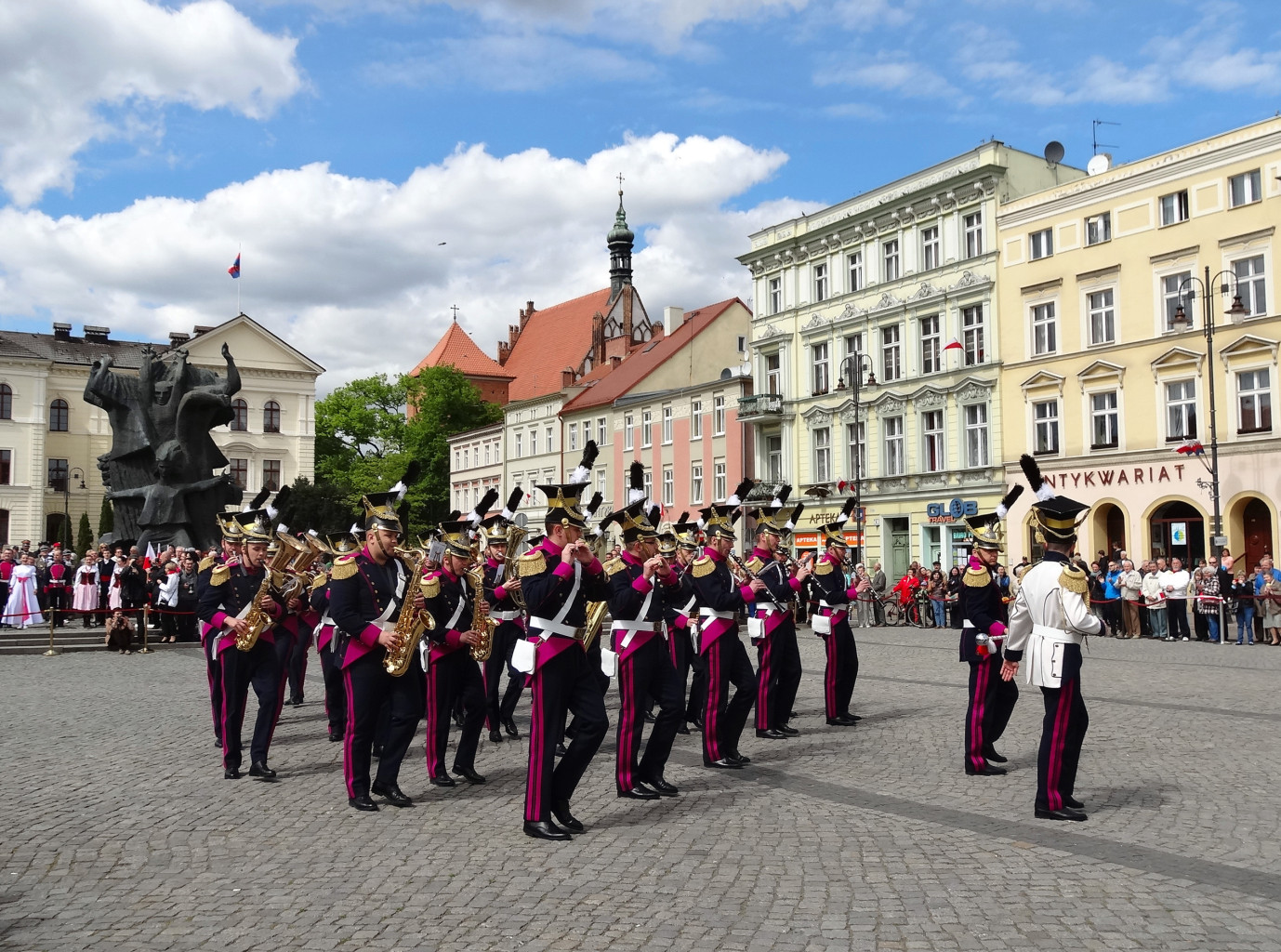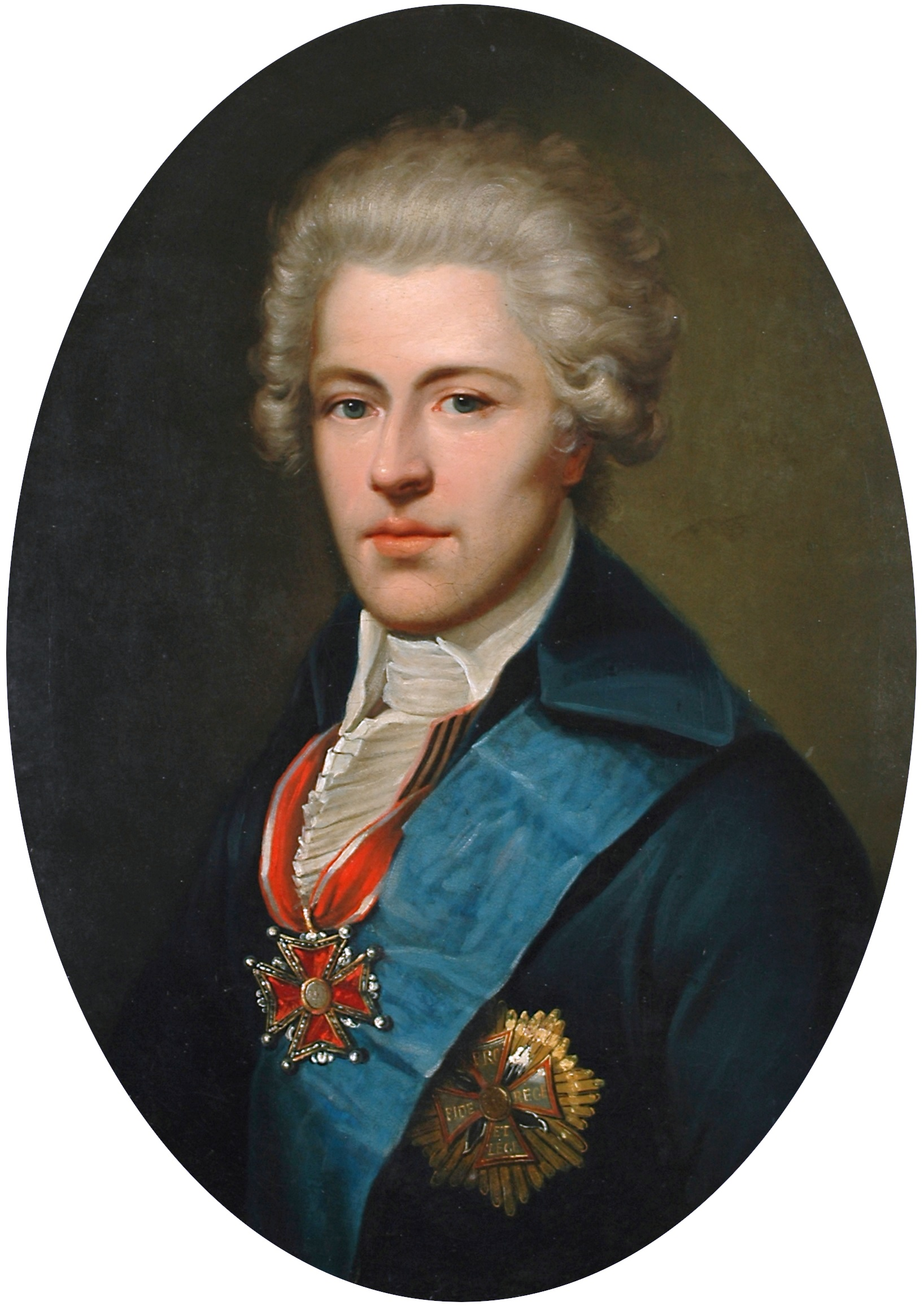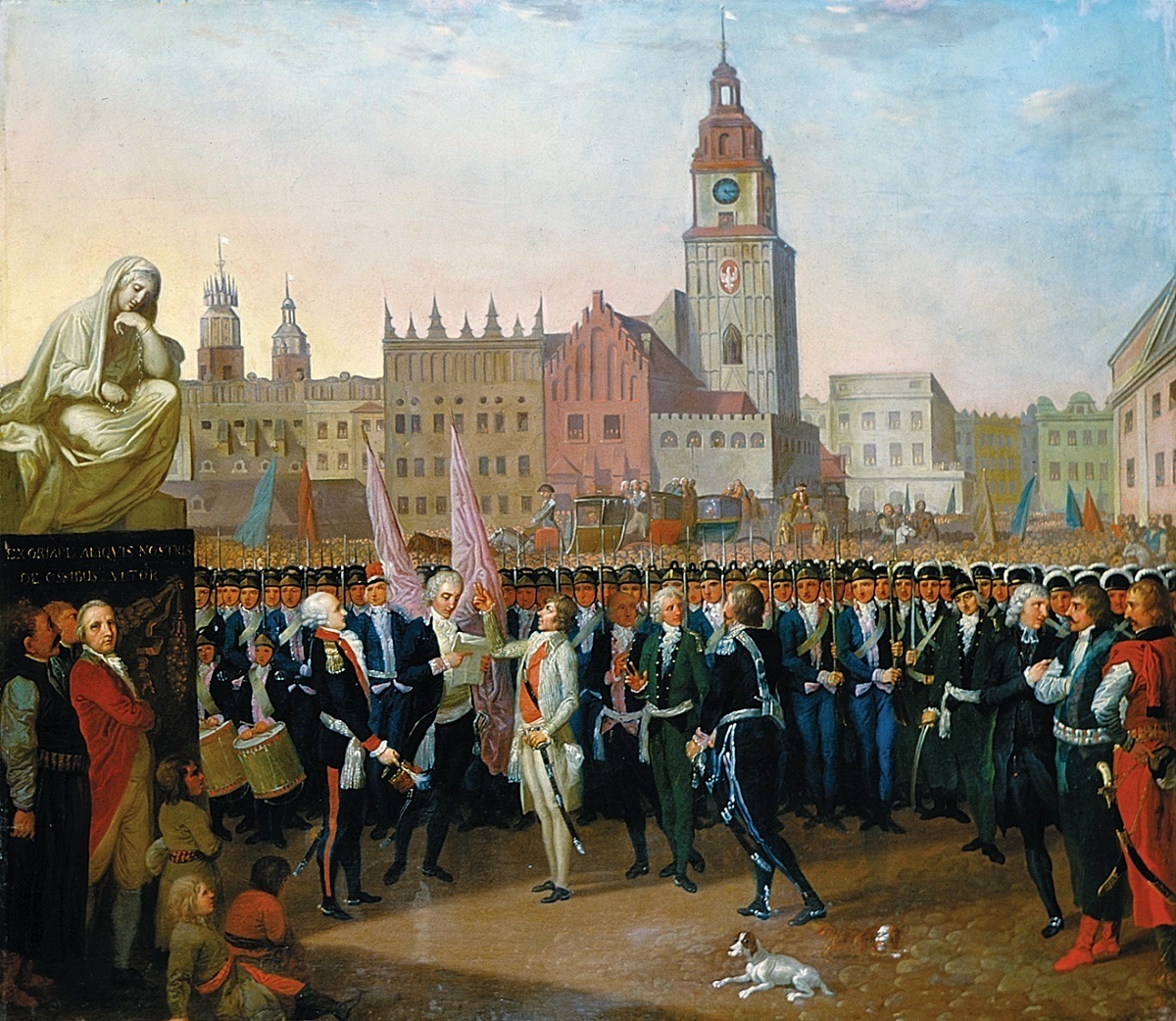|
3 May Constitution Day
3 May Constitution Day (also ''Third May National Holiday''; ) is a Polish national and public holiday. It celebrates the declaration of the Constitution of 3 May 1791—the first modern constitution in Europe. Festivities date back to the Duchy of Warsaw early in the 19th century, but it became an official holiday only in 1919 in the Second Polish Republic. Delisted during the Polish People's Republic, it was reestablished after the fall of communism in modern Poland. Background The Constitution of 3 May 1791 is considered one of the most important achievements in the history of Poland, despite being in effect for only a year, until the Russo-Polish War of 1792. Historian Norman Davies calls it "the first constitution of its type in Europe"; other scholars also refer to it as the world's second oldest constitution. The 3 May Constitution was designed to redress long-standing political defects of the Polish–Lithuanian Commonwealth. The Constitution sought to supplant the exi ... [...More Info...] [...Related Items...] OR: [Wikipedia] [Google] [Baidu] |
Constitution Of May 3, 1791 (painting)
''The Constitution of 3 May 1791'' () is an 1891 Romantic oil painting on canvas by the Polish artist Jan Matejko. It is a large piece, and one of Matejko's best known. It memorializes the Polish Constitution of 3 May 1791, a milestone in the history of the Polish–Lithuanian Commonwealth and a high point of the Polish Enlightenment. Like many Matejko works, the picture presents a grand scene populated with numerous historic figures, including Poland's last King, Stanisław August Poniatowski; Marshals of the Great Sejm Stanisław Małachowski and Kazimierz Nestor Sapieha; co-authors of the Constitution such as Hugo Kołłątaj and Ignacy Potocki; and other major contemporary figures such as Tadeusz Kościuszko. Some twenty individuals have been identified by modern historians; another ten or so who had been reported in older sources as being present, await definitive identification. The picture was painted between January and October 1891 to commemorate the Constituti ... [...More Info...] [...Related Items...] OR: [Wikipedia] [Google] [Baidu] |
Polish–Lithuanian Commonwealth
The Polish–Lithuanian Commonwealth, also referred to as Poland–Lithuania or the First Polish Republic (), was a federation, federative real union between the Crown of the Kingdom of Poland, Kingdom of Poland and the Grand Duchy of Lithuania, existing from 1569 to 1795. This state was among the largest, most populated countries of 16th- to 18th-century Europe. At its peak in the early 17th century, the Commonwealth spanned approximately and supported a multi-ethnic population of around 12 million as of 1618. The official languages of the Commonwealth were Polish language, Polish and Latin Language, Latin, with Catholic Church, Catholicism as the state religion. The Union of Lublin established the Commonwealth as a single entity on 1 July 1569. The two nations had previously been in a personal union since the Union of Krewo, Krewo Agreement of 1385 (Polish–Lithuanian union) and the subsequent marriage of Queen Jadwiga of Poland to Grand Duke Jogaila of Lithuania, who was cr ... [...More Info...] [...Related Items...] OR: [Wikipedia] [Google] [Baidu] |
Civil Holiday
Civil may refer to: *Civility, orderly behavior and politeness *Civic virtue, the cultivation of habits important for the success of a society *Civil (journalism) ''The Colorado Sun'' is an online news outlet based in Denver, Colorado. It launched on September 10, 2018, to provide long-form, in-depth coverage of news from all around Colorado. It was started with two years of funding from blockchain ventu ..., a platform for independent journalism * Civil (surname) See also * {{Disambiguation ... [...More Info...] [...Related Items...] OR: [Wikipedia] [Google] [Baidu] |
Polish Culture
The culture of Poland () is the product of its Geography of Poland, geography and distinct historical evolution, which is closely connected to History of Poland, an intricate thousand-year history. Poland has a Catholic Church, Roman Catholic majority, and Religion in Poland, religion plays an important role in the lives of many Polish people. The unique character of Polish culture developed as a result of its geography at the confluence of various European regions. It is theorised and speculated that ethnic Poles are the combination of descendants of West Slavs and people indigenous to the region including Celts, Balts and Germanic tribes which were gradually Polonization, Polonized after Poland's Baptism of Poland, Christianization by the Catholic Church in the 10th century. Over time Polish culture has been profoundly influenced by its interweaving ties with the Germanic languages, Germanic, Baltic States, Baltic, Jews, Jewish, Latinate and to a lesser extent; Byzantine Empire ... [...More Info...] [...Related Items...] OR: [Wikipedia] [Google] [Baidu] |
Polish History
The history of Poland spans over a thousand years, from Lechites, medieval tribes, Christianization of Poland, Christianization and Kingdom of Poland, monarchy; through Polish Golden Age, Poland's Golden Age, Polonization, expansionism and becoming one of the largest Polish–Lithuanian Commonwealth, European powers; to its Partitions of Poland, collapse and partitions, two world wars, Polish People's Republic, communism, and the restoration of democracy. The roots of Polish history can be traced to Ancient history, ancient times, when the territory of present-day Poland was inhabited by diverse ethnic groups, including Celts, Scythians, Sarmatians, Slavs, Balts and Germanic peoples. However, it was the West Slavs, West Slavic Lechites, the closest ancestors of ethnic Polish people, Poles, who established permanent settlements during the Early Middle Ages. The Lechitic Polans (western), Western Polans, a tribe whose name denotes "people living in open fields", dominated the re ... [...More Info...] [...Related Items...] OR: [Wikipedia] [Google] [Baidu] |
National Symbol
A national symbol is a manifestation of a nation or community, serving as a representation of their National identity, identity and values. National symbols may be not only applied to sovereign states but also nations and countries in a state of Colony, colonial or other forms of Dependent territory, dependence, federalism, federal integration, or even ethnocultural communities that identify as a "nationality" despite lacking autonomy. National symbols intend to unite individuals by creating visual, verbal, or icon, iconic representations of the national people, values, goals, culture and/or history. These symbols are often rallied around as part of celebrations of patriotism and/or aspiring nationalism (such as independence, autonomy, and/or separation movements) and are designed to be inclusive and representative of all the people of the national community. Common official national symbols *The national flag, flag or banner of a state *The Gallery of country coats of arms, c ... [...More Info...] [...Related Items...] OR: [Wikipedia] [Google] [Baidu] |
List Of Political Scientists
The following is a list of notable political scientists. Political science is the scientific study of politics, a social science dealing with systems of governance and power. A * Robert Abelson – Yale University psychologist and political scientist with special interests in statistics and logic * Henry J. Abraham – American scholar on the judiciary and constitutional law and James Hart Professor of Government Emeritus at the University of Virginia * Alan Abramowitz – expert in American politics, political parties, ideological realignment, elections, and voting behavior; professor at Emory University * Paul R. Abramson (political scientist), Paul R. Abramson – American political scientist known for his research and writing on American, European, and Israeli elections and professor of political science at Michigan State University *As'ad AbuKhalil – Lebanese-American professor of political science at California State University, Stanislaus. *Ibrahim Abu-Lughod – Pa ... [...More Info...] [...Related Items...] OR: [Wikipedia] [Google] [Baidu] |
Hugo Kołłątaj
Hugo Stumberg Kołłątaj, also spelled ''Kołłątay'' (1 April 1750 – 28 February 1812), was a prominent Polish constitutional reformer and educationalist, and one of the most prominent figures of the Enlightenment in Poland, Polish Enlightenment. He served as Deputy Chancellor (Poland), Deputy Chancellor of the Crown between 1791–92. He was a Catholic priest, social and political activist, political thinker, historian, philosopher, and polymath. Biography Early life Hugo Kołłątaj was born on 1 April 1750 in Velyki Dederkaly, Dederkały Wielkie (now in Western Ukraine) in Volhynian Voivodeship (1569–1795), Volhynia into a family of Polish nobility. Soon after, his family moved to Nieciesławice, near Sandomierz, where he spent his childhood. He attended school in Pińczów. He began his studies at the Jagiellonian University, Kraków Academy, subsequently, Jagiellonian University, where he studied law and gained a doctorate. Afterwards, around 1775 he took holy orders. ... [...More Info...] [...Related Items...] OR: [Wikipedia] [Google] [Baidu] |
Ignacy Potocki
Count Roman Ignacy Potocki, generally known as Ignacy Potocki (; 1750–1809), was a Polish nobleman, member of the influential magnate Potocki family, owner of Klementowice and Olesin (near Kurów), a politician, statesman, writer, and office holder. He was the Marshal of the Permanent Council (Rada Nieustająca) in 1778–1782, Grand Clerk of Lithuania from 1773, Court Marshal of Lithuania from 1783, Grand Marshal of Lithuania from 16 April 1791 to 1794. He was an educational activist, member of the Commission of National Education and the initiator and president of Society for Elementary Textbooks. He was an opponent of king Stanisław II August in the 1770s and 1780s, and a major figure in the Polish politics of that era. During the Great Sejm he was a leader of the Patriotic Party and the reform movement and eventually backed the King in many reform projects. An advocate of a pro-Prussian orientation, he helped conclude an alliance with Prussia in 1790. He co-autho ... [...More Info...] [...Related Items...] OR: [Wikipedia] [Google] [Baidu] |
Third Partition Of Poland
The Third Partition of Poland (1795) was the last in a series of the Partitions of Poland–Lithuania and the land of the Polish–Lithuanian Commonwealth among Prussia, the Habsburg monarchy, and the Russian Empire which effectively ended Polish–Lithuanian national sovereignty until 1918. The partition was the result of the Kościuszko Uprising and was followed by a number of Polish–Lithuanian uprisings during the period. Background Following the First Partition of Poland in 1772, in an attempt to strengthen the significantly weakened Commonwealth, King Stanisław August Poniatowski put into effect a series of reforms to enhance Poland's military, political system, economy, and society. These reforms reached their climax with the enactment of the May Constitution in 1791, which established a constitutional monarchy with separation into three branches of government, strengthened the bourgeoisie and abolished many of the nobility's privileges as well as many of the old law ... [...More Info...] [...Related Items...] OR: [Wikipedia] [Google] [Baidu] |
Kościuszko Uprising
The Kościuszko Uprising, also known as the Polish Uprising of 1794, Second Polish War, Polish Campaign of 1794, and the Polish Revolution of 1794, was an uprising against the Russian and Prussian influence on the Polish–Lithuanian Commonwealth, led by Tadeusz Kościuszko in Poland-Lithuania and the Prussian partition in 1794. It was a failed attempt to liberate the Polish–Lithuanian Commonwealth from external influence after the Second Partition of Poland (1793) and the creation of the Targowica Confederation. Background Decline of the Commonwealth By the early 18th century, the magnates of Poland and Lithuania controlled the state – or rather, they managed to ensure that no reforms would be carried out that might weaken their privileged status (the " Golden Freedoms"). Through the abuse of the '' liberum veto'' rule which enabled any deputy to paralyze the Sejm (Commonwealth's parliament) proceedings, deputies bribed by magnates or foreign powers or those sim ... [...More Info...] [...Related Items...] OR: [Wikipedia] [Google] [Baidu] |
Second Partition Of Poland
The 1793 Second Partition of Poland was the second of partitions of Poland, three partitions (or partial annexations) that ended the existence of the Polish–Lithuanian Commonwealth by 1795. The second partition (politics), partition occurred in the aftermath of the Polish–Russian War of 1792 and the Targowica Confederation of 1792, and was approved by its territorial beneficiaries, the Russian Empire and the Kingdom of Prussia. The division was ratified by the coerced Polish parliament (Sejm of the Polish–Lithuanian Commonwealth, Sejm) in 1793 (see the Grodno Sejm) in a short-lived attempt to prevent the inevitable complete annexation of Poland, the Third Partition of Poland, Third Partition. Background By 1790, on the political front, the Commonwealth had deteriorated into such a helpless condition that it was forced into an alliance with its enemy, Prussia. The Polish–Prussian alliance, Polish-Prussian Pact of 1790 was signed, giving false hope that the Commonwealth mig ... [...More Info...] [...Related Items...] OR: [Wikipedia] [Google] [Baidu] |






